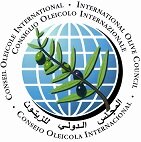About olives
The olive fruit is a drupe. It has a bitter component (oleuropein), a low sugar content (2.6-6%) compared with other drupes (12% or more) and a high oil content (12-30%) depending on the time of year and variety.
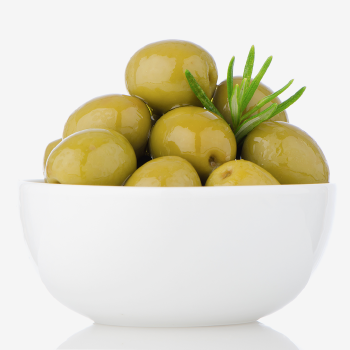
These characteristics make it a fruit that cannot be consumed directly from the tree and it has to undergo a series of processes that differ considerably from region to region, and which also depend on variety. Some olives are, however, an exception to this rule because as they ripen they sweeten right on the tree, in most cases this is due to fermentation. One case in point is the Thrubolea variety in Greece.
Oleuropein, which is distinctive to the olive, has to be removed as it has a strong bitter taste: it is not, however, pernicious to health. Depending on local methods and customs, the fruit is generally treated in sodium or potassium hydroxide, brine or successively rinsed in water.
Tips
Size
The olive’s suitability for table consumption is a function of its size, which is important to presentation. Olives between 3 and 5 g are considered medium-sized, while those weighing over 5 g are large.
Stone
The stone should come away easily from the flesh and a flesh:stone ratio of 5 to 1 is acceptable; the higher this ratio the better the commercial value of the olives.
Sugar content
The stone should come away easily from the flesh and a flesh:stone ratio of 5 to 1 is acceptable; the higher this ratio the better the commercial value of the olives.
Shape
Fruits that are more or less spherical in shape usually sell best, although some elongated ones also find favour.
Skin
The skin of the fruit should be fine, yet elastic and resistant to blows and to the action of alkalis and brine.
Oil content
The skin of the fruit should be fine, yet elastic and resistant to blows and to the action of alkalis and brine.
Olives turning colour
These are obtained from olives that are picked when their colour is starting to change. They are harvested before full maturity, when the flesh is quite firm and oil formation has not concluded. The process of darkening the fruit by oxidation is typical of California. Olives suitable for processing as green olives are selected as they enter the factory, then placed in brine at concentrations between 2.5 and 10 percent in inverse relationship to fruit size, and they are protected from air.
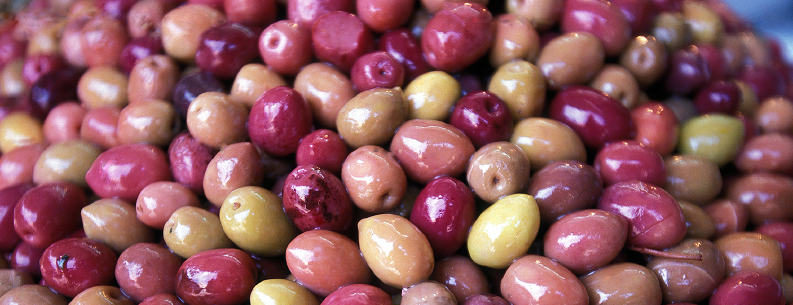
The olives are placed in large concrete tanks in an initial solution of 2 percent lye until they are ready for subsequent preparation. When they are to be prepared for the market, they are placed in low-concentration lye and then washed in water into which compressed air is injected. Further treatments in dilute lye, each followed by aeration, facilitate penetration through to the stone. Next, the olives are washed to eliminate lye residue and to lower the pH to close to neutral. Solutions of 0.1 percent ferrous gluconate or lactate are often applied to enhance fruit darkening. After placement in brine for a few days, the olives are ready for canning. Heat processing in the form of temperature and pressure-controlled sterilisation is fundamental to ensure the product keeps properly.
Green Olives
Green olives are obtained from olives harvested during the ripening cycle when they have reached normal size, but prior to colour change. They are usually hand picked when there is a slight change in hue from leaf-green to a slightly yellowish green and when the flesh begins to change consistency but before it turns soft. Colour change should not have begun. Trials have been run to machine harvest table olives, but owing to the high percentage of bruised fruit they had to be immersed in a diluted alkaline solution while still in the orchard. Recently harvested, the olives are taken to the plant for processing on the same day if possible.
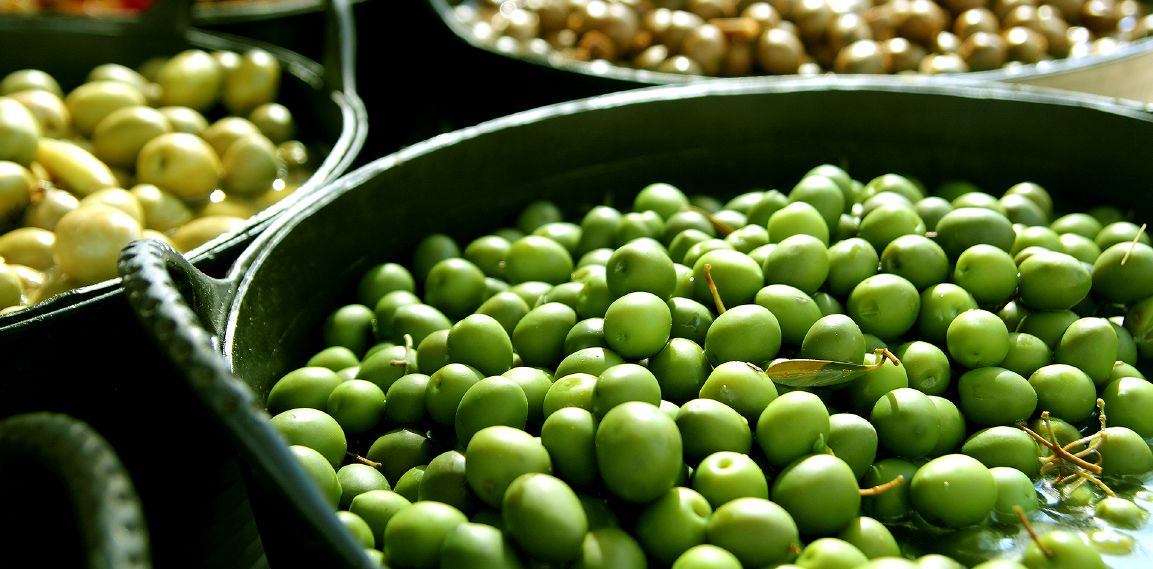
How are they processed?
Green olives are processed in two principal ways: with fermentation (Spanish type) and without fermentation (Picholine or American type).
SPANISH OR SEVILLIAN STYLE
The olives are treated in a diluted lye solution (sodium hydroxide) to eliminate and transform the oleuropein and sugars, to form organic acids that aid in subsequent fermentation, and to increase the permeability of the fruit. The lye concentrations vary from 2% to 3.5%, depending on the ripeness of the olives, the temperature, the variety and the quality of the water. The treatment is performed in containers of varying sizes in which the solution completely covers the fruit. The olives remain in this solution until the lye has penetrated two thirds of the way through the flesh. The lye is then replaced by water, which removes any remaining residue and the process is repeated. Lengthy washing properly eliminates soda particles but also washes away soluble sugars which are necessary for subsequent fermentation.
Fermentation is carried out in suitable containers in which the olives are covered with brine. Traditionally, this was done in wooden casks. More recently, larger containers have come into use that are inert on the inside. The brine causes the release of the fruit cell juices, forming a culture medium suitable for fermentation. Brine concentrations are 9-10% to begin with, but rapidly drop to 5% owing to the olive’s higher content of interchangeable water.
At first Gram-negative bacteria multiply, but after a week and a half they disappear. They are a consequence of contamination produced in the plant installations, and in the atmosphere and brine and can be avoided by stepping up hygiene measures. At a pH level of 6 and upwards, lactobacilli develop massively until the Gram-negatives disappear and the brine attains a pH of 4.5. There is a predominance of Lactobacillus plantarum which produces lactic acid from glucose almost by itself. When the fermentable matter is spent, acid formation ceases. Yeasts appear together with the lactobacilli. Fermentative yeasts do not cause deterioration but oxidant yeasts consume lactic acid and raise the pH level and may therefore jeopardise the process.
Under certain conditions normal fermentation processes can be altered by the presence of undesirable microorganisms which can transmit poor organoleptic properties to the olives or impair their keeping properties. Gas pocket fermentation is caused by the Gram-negative bacilli in the first stage of fermentation, but can be controlled by intensifying hygiene precautions when the olives are delivered to the plant, as well as during lye treatment and washing. If gas pockets still appear in spite of these measures, the pH level can be lowered to 4 by adding an acid. Butyric fermentation is well controlled by ensuring the proper pH level. Putrid fermentation is caused by poorly-kept containers and bad water. Lastly, there is a type of deterioration known by its Spanish name of “zapatería” (cobbler’s) which produces an unpleasant taste and odour at the end of the fermentation process, often coinciding with rising temperatures in the spring or early summer. It is produced by bacteria belonging to the Clostridium and Propioni-bacterium genus. The right combination of brine concentration and pH level (5% salt and 4.5 pH) helps to control fermentation processes.
When properly fermented, olives keep for a long time. If they are in casks, the brine level must be topped up. At the time of shipment, the olives have to be classified for the first or second time as the case may be. The original brine is replaced and the olives are packed in barrels and tin or glass containers. Sometimes they are stoned (pitted) or stuffed with anchovies, pimento, etc.
The most commonly used varieties are Manzanillo, Gordal and Moroccan Picholine.
PICHOLINE STYLE
Olives belonging to the Picholine variety from Languedoc and Lucques in southern France are prepared in this manner, as are other varieties from Morocco and Algeria.
The bitterness of the olives is removed by treating them in a 3-3.5º B lye solution in which they are left for 8 to 72 hours until the lye has penetrated three-quarters of the way through the flesh. They are rinsed several times over the next day or two, and then placed in a 5/6% brine solution for two days. A second 7% brine solution is prepared, and acidity is corrected with citric acid (pH 4.5). After 8-10 days they are ready to be eaten and retain their intense green colour. Sometimes the consignment has to be postponed, and it is necessary to store the olives. This is easy, as long as temperatures do not rise. The olives can stay in an 8% brine solution until spring, but then it has to be raised to 10%. In larger installations they can be kept in cold storage, at a temperature of between 5º and 7º C, in a 3% brine solution.
Before shipment, the olives are washed repeatedly, sorted and packed in suitable containers in 5º or 6ºB brine.
Black Olives
There are olives that are harvested when the fruit is close to full ripeness, once it has attained the colour and oil content corresponding to each particular variety. The are many types of preparations depending on local tastes. Those in greatest commercial use are now outlined.
Black Olives in brine
These are typical of the eastern Mediterranean countries; in Greece they are from the Conservolea variety, which grades at around 200 fruits per kilogram, and in Turkey they are made with the Gemlik variety. The fruit is picked by hand when black ripe, but before the olives overripen or are shrivelled by frost. They have to be transported as quickly as possible to the processing plant where they are sorted, washed and immersed in 8-10 percent brine. Large-scale plants use big 10-20 tonne tanks while small-scale processors continue to use wooden vats. At the start of fermentation the tanks are tightly sealed because the olives must not be exposed to air. The brine stimulates the microbial activity for fermentation and reduces the bitterness of the oleuropein. It drops to a concentration of 6 percent, which makes it necessary to increase it to 8 percent and even 10 percent, while homogenising it by operating a pump to activate circulation.
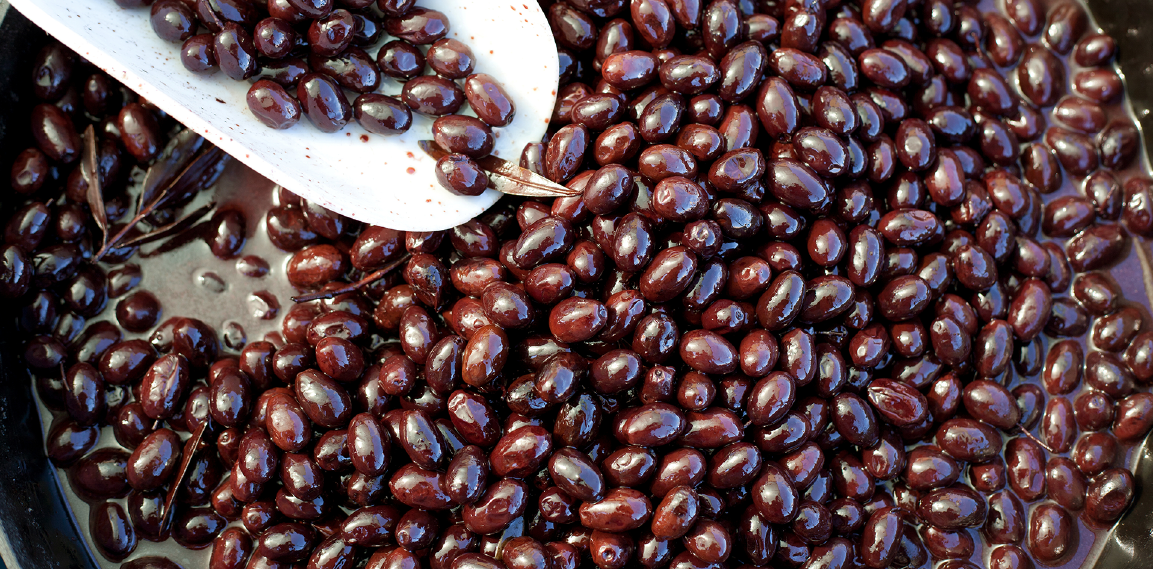
When the bitterness has been sufficiently weakened – how long this takes can vary greatly – the fruit can be sold. The colour fades during the process, but is corrected by aerating the olives for two or three days, although sometimes they are treated with 0.1 percent ferrous gluconate or lactate to make them a deeper black. Lastly, the olives are selected and packed in barrels or internally varnished cans, which are filled with 8 percent fresh brine. They are popular on the market because of their slightly bitter taste and aroma.
They are also packed in vinegar (25 percent of brine volume) and may even be heat processed; a few grams of oil are then added to each can to form a surface layer. The Kalamata variety is prepared in this way; the elongated, medium-sized olives are slit to absorb the flavour of the marinade and then canned.
Black Olives in dry salt
Also of Greek origin, these are prepared using overripe olives of the Megaritiki variety. They are vigorously washed and placed in baskets with alternating layers of dry salt equivalent to 15 percent of the weight of the olives. The end product is not bitter, but salty, and it looks like a raisin; it is for local consumption.
Finally, a mention should also be given to the numerous styles of table olive preparations in the different olive-growing regions. Some examples are olives treated solely with water to sweeten them prior to crushing or splitting, which facilitates washing. In many cases, the olives are eaten after being seasoned with herbs, pieces of orange, lemon, garlic, paprika, oregano, etc. Until the turn of the twentieth century, the table olive market was local, but since then it has expanded to non-producing areas where table olives have become popular. This is particularly true of the Spanish, Greek and California types.
